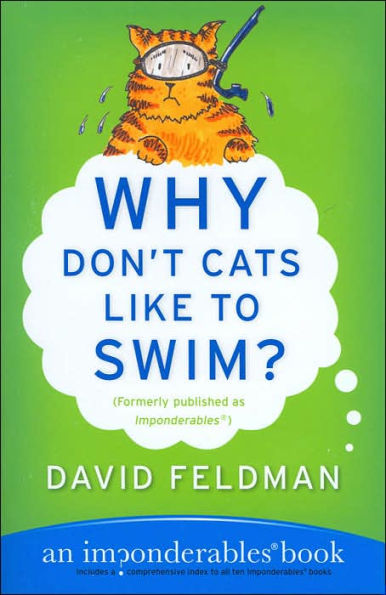Pop-culture guru David Feldman demystifies these topics and so much more in Why Don't Cats Like to Swim? — the unchallenged source of answers to civilization's most perplexing questions. Part of the Imponderables® series, Feldman's book arms readers with information about everyday life — from science, history, and politics to sports, television, and radio — that encyclopedias, dictionaries, and almanacs just don't have. Where else will you learn what makes women open their mouths when applying mascara?
Pop-culture guru David Feldman demystifies these topics and so much more in Why Don't Cats Like to Swim? — the unchallenged source of answers to civilization's most perplexing questions. Part of the Imponderables® series, Feldman's book arms readers with information about everyday life — from science, history, and politics to sports, television, and radio — that encyclopedias, dictionaries, and almanacs just don't have. Where else will you learn what makes women open their mouths when applying mascara?

Why Don't Cats Like to Swim?: An Imponderables Book
336
Why Don't Cats Like to Swim?: An Imponderables Book
336Paperback(Reprint)

Product Details
| ISBN-13: | 9780060751487 |
|---|---|
| Publisher: | HarperCollins |
| Publication date: | 11/02/2004 |
| Series: | Imponderables Series , #1 |
| Edition description: | Reprint |
| Pages: | 336 |
| Product dimensions: | 5.31(w) x 8.00(h) x 0.84(d) |
